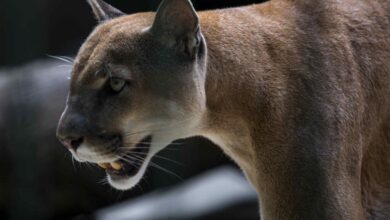One of the worst species of invasive ants in the world was found in Ecuador
An innovative international study that counts the National Institute of Biodiversity of Ecuador among its collaborators has identified the 'big-headed ant' Pheidole Megacephala, one of the most invasive ant species in the world, as it is now established in Ecuador, which means a potential threat to local ecosystems and biodiversity.

Photo: Wikimedia-Sarefo
EFE
Escucha este artículo
Leer en español: Una de las peores especies de hormigas invasoras del mundo fue hallada en Ecuador
Invasive ant species found in Ecuador
One of the worst species of invasive ants in the world, the Pheidole Megacephala, has been found in Ecuador and is part of an international scientific study on 15 breeds of this type of insect that have arrived in this South American country "to stay."
This was revealed by a study sponsored by the National Institute of Biodiversity (Inabio), the Agency for Phyto and Animal Health Regulation and Control, the National Polytechnic School, the University of Texas (United States) and the organization "Way to Development Corporation."
Updated list of ant species in Ecuador
The study, published in the specialized magazine Check List, presented an updated list of 15 species of ants introduced in Ecuador, prepared based on analysis of specimens observed in biological collections, based on academic data and citizen observations, commented Inabio.
The report highlighted, above all, two new records of ant species, one known as Cardiocondyla Mauritanica, whose discovery is the first to occur in South America, and another called Pheidole Megacephala or lion ant, considered one of the "worst invasive species in the world".
"Invasive species are those that can establish themselves to reproduce outside their native distribution area and are agents of change in the ecosystems they invade," said Inabio after warning of the effects that could arise from the presence of this type of specimens. native people.
And, according to the source, " these species can displace native biodiversity, affect crops or other human activities, and even transport pathogens that cause diseases."
Invasive ant species in Ecuador
Ants have more than 200 species introduced outside their native range, 19 are classified as highly problematic and five are on the list of the 100 worst invasive species in the world, the Institute added.
He specified that, although ants in general are important for nature conservation and human well-being, "the presence of these invasive insects in Ecuador has gone unnoticed until now because greater attention has been paid to other animals and plants exotic."
In the study, many of the records were found in urban areas, on the limits of natural reserves and the country's Protected Areas System.
For this reason, the presence of exotic ant species has been documented in five national reserves: the Amazonian Yasuní National Park, Cuyabeno Wildlife Reserve, and Limoncocha Biological Reserve; and the coastal Cerro Blanco Protected Forest and Río Canandé Biological Reserve.
Also read: Nicaragua Faces Dengue Challenge: Declining Cases, Yet Highest Contagion Rate in America
Threats to biodiversity
"The introduction of exotic ants into native forests and protected areas could replace native fauna through predation, hybridization, and competition," which could lead to "changes in ecosystem processes, loss of biodiversity and increase in pests.", added Inabio.
This phenomenon – he added – could be aggravated by global climate change, which can influence the distribution of species and forest dynamics, especially in tropical areas.
The study has been prepared by researchers Jefferson Salazar-Basurto, Adrián Troya, Francisco Romero, Alex Wild, and Alex Pazmiño-Palomino.
Inabio stressed that this type of study reflects the commitment of that institute to the production of research aimed at feeding the scientific requirements of the Ecuadorian State, in its task of strengthening the conservation of the country's natural heritage.





